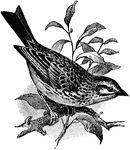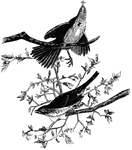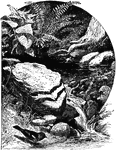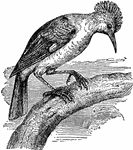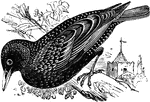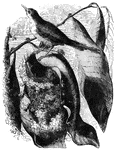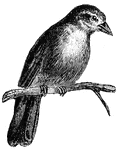
Sparrow
Java sparrows are eagerly sought for as pets, because of their brilliant plumage and the facility with…
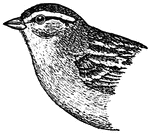
Chipping Sparrow
The Chipping Sparrow (Spizella passerina) is a species of American sparrow in the family Emberizidae.…

Common Sparrow of Europe
Often found among human settlement, the common sparrow of Europe's diet consists of seeds, insects,…
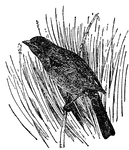
Field Sparrow
The field sparrow is smaller than the song sparrow and is very shy. It likes to eat spiders, ants, and…
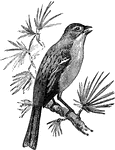
Field Sparrow Singing
The field sparrow (Spizella pusilla) is a songbird in the Emberizidae family of American sparrows.
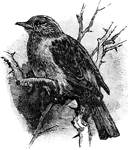
Hedge Sparrow
"Accentor- A genus of passerine birds, family Sylviidæ, subfamily Accentorinæ."-Whitney,…

House Sparrow
The House Sparrow is lively, pert, and cunning, the true gamin of the winged race,(Figuier, 1869).

House Sparrow
The House Sparrow is lively, pert, and cunning, the true gamin of the winged race,(Figuier, 1869).

Song Sparrow
The Song Sparrow, Melospiza melodia, is a medium-sized American sparrow. Adults have brown upperparts…

Vesper Sparrow
The Vesper Sparrow (Pooecetes gramineus) is a bird in the Emberizidae family of American sparrows. It…
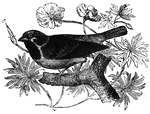
Wood Sparrow
Somewhat aloof from human habitiation, the wood-sparrow can often be seen mingline with other sparrow…

Spider
"Bird-catching Spider, a name originally given to a large spider, Mygale avicularia, a native of Cayenne…
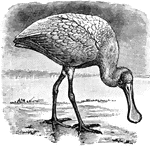
Spoonbill
"Roseate Spoonbill-a large grallatorial bird of the genus Platalea, family Plataledidæ, related…
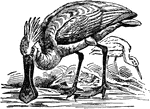
Spoonbill
"Spoonbill is the popular name of the birds of the genus Platalea, belonging to the heron family (Ardeidæ),…

Spoonbill Standing on One Leg
"Platalea leucorodia, the Spoonbill, has white plumage, with bare lores, orbits, and throat, and a fine…
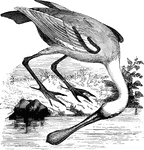
Roseate Spoonbill
Drawing its name from the widing of its bill towards the tip, the spoonbill frequents coastal and marshy…

Painted Spurfowl
The Painted Spurfowl (Galloperdix lunulata) is a bird in the Phasianidae family of pheasants.

Starling
Starlings are remarkable for their vivacity, and grave, sombre plumage, lit up with brilliant metallic…
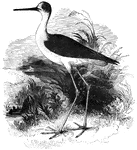
Black-Winged Stilt
Also known as the European stilt, the black-winged stilt inhabits coastal areas where it forages for…
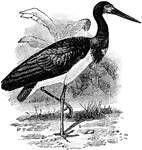
Abdim's Stork
The Abdim's Stork (Ciconia abdimii) is a large bird in the Ciconiidae family of storks.

Marabout Stork
Found in the tropical regions of Africa, the marabout stork can be found amongst vultures, picking through…

Shoe-Billed Stork
The Shoe-Billed Stork is a bird related to the Storks that feeds on creatures that live in muddy water.
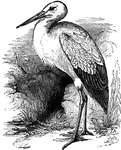
White Stork
Measuring about three feet in length, the white stork migrates to Europe during the summer, and back…
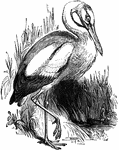
White Stork
The white stork (Ciconia ciconia) is a large wading bird in the stork family (Ciconiidae).
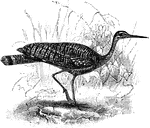
Sunbittern in Swamp
The Sunbittern (Eurypyga helias) is a bird native to the tropical regions of America.
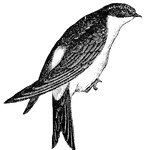
Swallow
The swallows are recognized by their long, pointed wings, forked tail and excessively short tarsi. (Figuier,…

Swallow
"As he skims along close to the ground or the water, quick as thought he catches any unlucky fly that…

Swallow
Swallows are members of the perching bird family. They have narrow wings and long split tails.

Bank Swallow
The bank swallow (also known as the sand martin) lives in large communities, often of several hundred…

Cliff Swallow
The swallows are recognized by their long, pointed wings, forked tail and excessively short tarsi. (Figuier,…

Common European Swallow
The common European swallow, which averages approximately six inches in length. This migratory bird…
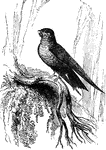
Esculent Swallow
The esculent swallow's nest is prized among the Chinese as a delicacy. It is native to many parts of…
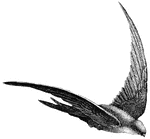
Salangane Swallow
The Swallows are recognized by their long, pointed wings, forked tail and excessively short tarsi. (Figuier,…
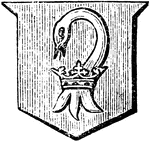
Swan Gorged
"A swan's head erased at the neck, ducally gorged or. GORGED. Any animals, particularly birds, that…
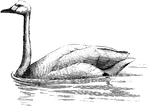
Bewick's Swan
"Cygnus bewicki, Buck's Swan, is white with black feet and bill, the basal half of the latter being…

Mute Swan
Measuring up to five feet in length, the mute swan is found throughout Europe, and has long been domesticated…
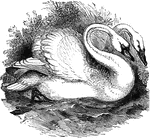
Mute Swan
The mute swan (Cygnus olor) is a large water bird in the family Anatidae which also includes geese and…
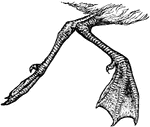
Swimming Swan
"Swan, in the act of swimming, the right foot being fully expanded and about to give the effective stroke,…

Swift
Swifts are related to swallows. The Swallows are recognized by their long, pointed wings, forked tail…
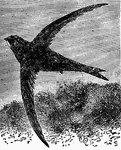
Common Swift
"The Swift, like swallows in many respects, their structure is almost entirely different, and some naturalists…
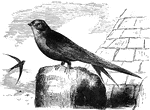
Common European Swift
This swift prefers to build its nest under the eaves of houses, in holes around steeples, in old towers,…
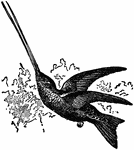
Swordbill
"Swordbill is a popular name for any individual of the humming bird genus, Docimastes. The bill which…
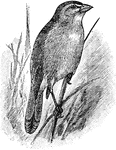
Tanager
The Texas Sparrow or Green Finch (Embernagra rufovirgata) is a finch-like tanager of the Embernagra…
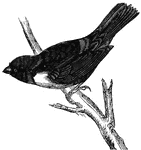
Scarlet Tanager
The scarlet tanager (also known as the black-winged summer redbird, or fire bird) feeds on insects,…
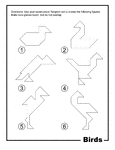
Birds Outline Tangram Card
Outlines of birds (duck, swan, turkey vulture, cormorant, and egret) made from tangram pieces. Tangrams,…
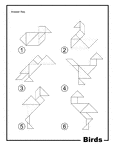
Birds Outline Solution Tangram Card
Solutions for outlines of birds (duck, swan, turkey vulture, cormorant, and egret) made from tangram…

Birds Silhouette Tangram Card
Silhouette outlines of birds (duck, swan, turkey vulture, cormorant, and egret) made from tangram pieces.…
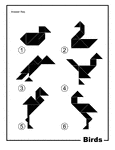
Birds Silhouette Solution Tangram Card
Solutions for silhouette outlines of birds (duck, swan, turkey vulture, cormorant, and egret) made from…

